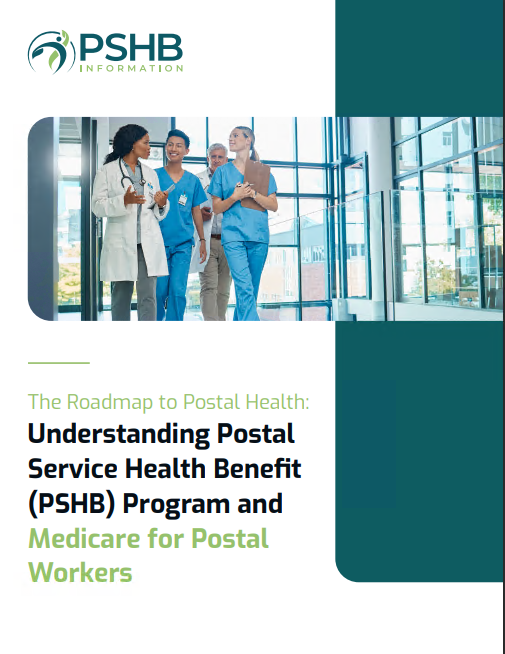Key Takeaways
-
Understanding how Medicare Part B integrates with the Postal Service Health Benefits (PSHB) Program can help you make better decisions during enrollment.
-
Knowing the costs and timelines associated with Medicare Part B can prevent surprises and ensure you maintain uninterrupted health coverage.
Why Medicare Part B Matters for PSHB Participants
As a participant in the Postal Service Health Benefits (PSHB) Program, you may already be aware that Medicare plays a key role in your healthcare options when you become eligible. Medicare Part B, which covers outpatient services like doctor visits, diagnostic tests, and durable medical equipment, is often required for continued PSHB coverage if you are Medicare-eligible. This integration ensures that your healthcare needs are met while reducing out-of-pocket expenses.
Navigating these requirements might seem overwhelming at first, but understanding the basics will help you avoid complications and make informed choices. Let’s break it down.
The Cost of Medicare Part B in 2025
Medicare Part B comes with a monthly premium and an annual deductible. For 2025, the standard monthly premium is $185, while the annual deductible is $257. These figures are adjusted annually, so they may increase slightly in future years.
It’s important to note that some individuals may pay more for Part B premiums due to the Income-Related Monthly Adjustment Amount (IRMAA). If your income exceeds certain thresholds—$106,000 for individuals and $212,000 for couples filing jointly—you’ll face higher premiums. This adjustment is based on your modified adjusted gross income (MAGI) from two years prior, meaning your 2023 tax return determines your 2025 Part B premium.
Medicare Enrollment Requirements for PSHB Participants
Key Deadlines and Timelines
If you’re a Postal Service annuitant or family member who becomes eligible for Medicare in 2025, you’ll need to enroll in Medicare Part B to maintain PSHB coverage. Enrollment typically happens during these periods:
-
Initial Enrollment Period (IEP): A seven-month window around your 65th birthday, starting three months before and ending three months after.
-
General Enrollment Period (GEP): From January 1 to March 31 each year for those who missed their IEP. However, coverage begins on July 1, and late enrollment penalties may apply.
-
Special Enrollment Period (SEP): For individuals transitioning from employer-sponsored coverage, allowing enrollment without penalties.
It’s critical to meet these deadlines. Failing to enroll during your IEP could lead to penalties that increase your Part B premium by 10% for every 12 months you were eligible but didn’t enroll. This penalty is permanent and can add up over time.
How Medicare Part B Affects Your PSHB Coverage
Once you enroll in Medicare Part B, it will act as your primary coverage, with PSHB serving as secondary insurance. This coordination reduces out-of-pocket costs by covering copayments, coinsurance, and other gaps in Medicare. Many PSHB plans even waive deductibles and lower premiums for enrollees with Medicare Part B.
Avoiding Enrollment Pitfalls
Late Enrollment Penalties
Late enrollment can be costly, especially for PSHB participants. If you miss your IEP and fail to qualify for an SEP, penalties are unavoidable. For example, a 10% penalty on the standard $185 premium means paying an additional $18.50 each month—and that’s just for one year of missed enrollment. If you delay for multiple years, the penalties multiply.
Coverage Gaps
Failing to enroll in Medicare Part B on time may lead to coverage gaps. This can leave you paying the full cost of outpatient services out-of-pocket until Medicare coverage begins. Ensuring a seamless transition is essential to avoid unexpected medical bills.
Income Threshold Considerations
If your income fluctuates due to retirement or other life changes, you can request an adjustment to your IRMAA determination. Use Form SSA-44 to report changes such as retirement, marriage, or divorce, which may reduce your Part B premium.
What You Should Expect at Enrollment
Coordination Between Medicare and PSHB
When you enroll in both Medicare Part B and PSHB, you’ll experience coordinated benefits designed to reduce your overall healthcare costs. For example, Medicare typically covers 80% of approved costs for outpatient services, while your PSHB plan can step in to cover the remaining 20%. This arrangement minimizes your out-of-pocket expenses for routine care and major medical events alike.
Prescription Drug Coverage Integration
Medicare-eligible PSHB participants automatically receive prescription drug coverage through a Medicare Part D Employer Group Waiver Plan (EGWP). This ensures comprehensive medication coverage without requiring you to enroll in a separate Medicare Part D plan. For 2025, the Part D out-of-pocket cap of $2,000 offers significant financial relief for high-cost prescriptions.
Premium Reimbursements
Some PSHB plans may reimburse a portion of your Medicare Part B premium. This feature can help offset the cost of enrollment, making the integration of Medicare and PSHB more affordable. Check your plan’s brochure for details.
Planning Ahead for Retirement
Estimate Your Future Costs
To budget effectively, calculate your total healthcare expenses, including Medicare premiums, deductibles, and PSHB premiums. Don’t forget to account for potential IRMAA adjustments if your income exceeds the thresholds.
Stay Informed
The PSHB Program sends annual notifications outlining changes in premiums, benefits, and requirements. Reviewing this information each year ensures you’re aware of any updates that could affect your coverage or costs.
Evaluate Your Healthcare Needs
Your health needs may evolve as you age, so periodically assess your coverage. If you anticipate higher medical expenses, the combination of Medicare and PSHB provides robust protection. However, understanding how your specific plan coordinates with Medicare ensures you’re maximizing your benefits.
What Happens If You Don’t Enroll in Medicare Part B
Choosing not to enroll in Medicare Part B when required can have serious consequences. Your PSHB plan may increase premiums or require higher cost-sharing for individuals without Medicare Part B. In some cases, you might lose access to specific benefits altogether.
Additionally, without Medicare Part B, you’ll be responsible for the full cost of outpatient services, which can add up quickly. To avoid these pitfalls, make Medicare enrollment a priority when you’re eligible.
Common Questions About Medicare and PSHB Integration
Do I Have to Enroll in Medicare Part B?
If you’re Medicare-eligible and covered under the PSHB Program, enrolling in Medicare Part B is usually mandatory to maintain full PSHB benefits. Exceptions apply to certain retirees or those with alternative coverage.
Can I Delay Enrollment Without Penalty?
You can delay Part B enrollment without penalties if you’re still working and covered by an employer-sponsored health plan. Once you retire or lose coverage, you’ll have an SEP to enroll in Medicare.
What If I Can’t Afford Medicare Part B Premiums?
Low-income individuals may qualify for programs like the Medicare Savings Program (MSP), which can help cover Part B premiums and other costs. Check your eligibility to explore these options.
Smooth Transitions: Preparing for Enrollment
Understanding the interplay between Medicare Part B and the PSHB Program is key to a seamless transition into retirement. By enrolling on time, staying informed about costs, and coordinating benefits effectively, you can minimize expenses and maximize coverage.
Taking the time to prepare ensures that your health needs are met without unexpected costs or gaps in coverage. With the right planning, you can enjoy peace of mind and focus on your retirement years.







